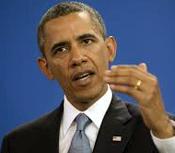Mitigating future aviation CO2 emissions – “timing is everything”
What is the best and most cost-effective way of mitigating future aviation emissions? Undoubtedly a mix of strategies is required to tackle the rapidly growing emissions of CO2 from aviation. However, there are some clues to guide decision makers available from the well-established science of CO2.
This report looked at ways in which aviation CO2 emissions could be mitigated, and how far the mitigation potential of each measure got us towards various ‘goals’ for the reduction of international aviation emissions of CO2. ‘Goals’ tend to be focused on achieving an emissions target by a certain date. However, this approach does not factor in the physics of CO2 – namely the accumulative nature of CO2, its long lifetime in the atmosphere and its consequent effect on climate. The emissions’ pathway by which a goal is achieved over time matters more than simply achieving the goal itself.
This work conducted over 11,000 complex calculations to rank the ‘best’ mitigation strategies, both as individual measures and combined strategies, in terms of their climate impacts – calculated as radiative forcing and global mean temperature response.
We find that emissions trading, as a measure, offers the single largest incremental improvement in climate impact by 2050. The least effective strategy is biofuels, using the assumptions of the UK Committee on Climate Change’s assessment of potential biofuel availability in 2050, even at what they termed “speculative” levels. Maximum feasible reductions from improvements in technology and operational improvements offered the second best mitigation potential as a single measure.
The clue as to why an efficiently operated emissions trading system is so effective lies in its possibility to reduce emissions quickly. This is a fundamental point. Other mitigation strategies (which must still be pursued) tend to offer ‘late savings’ as the relevant technologies and fleet infiltration develop.
What matters more is the total cumulative emissions from aviation by 2050, rather than simply achieving some arbitrary goal by that date. This accords with the physics of CO2 but is often ignored by policy makers and the developers of organisational emission goals and targets.

Figure 1: CO2 radiative forcing savings for international aviation from business-as-usual (BAU) technology and operations improvements in combination with different mitigation options, compared with the business-as-usual (BAU) scenario.

Figure 2: CO2 radiative forcing savings for international aviation from maximum feasible reductions (MFR) from technology and operations improvements in combination with different mitigation options, compared with the business-as-usual (BAU) scenario.
Click here to download hi-res figures from the report (as a single zip file).







